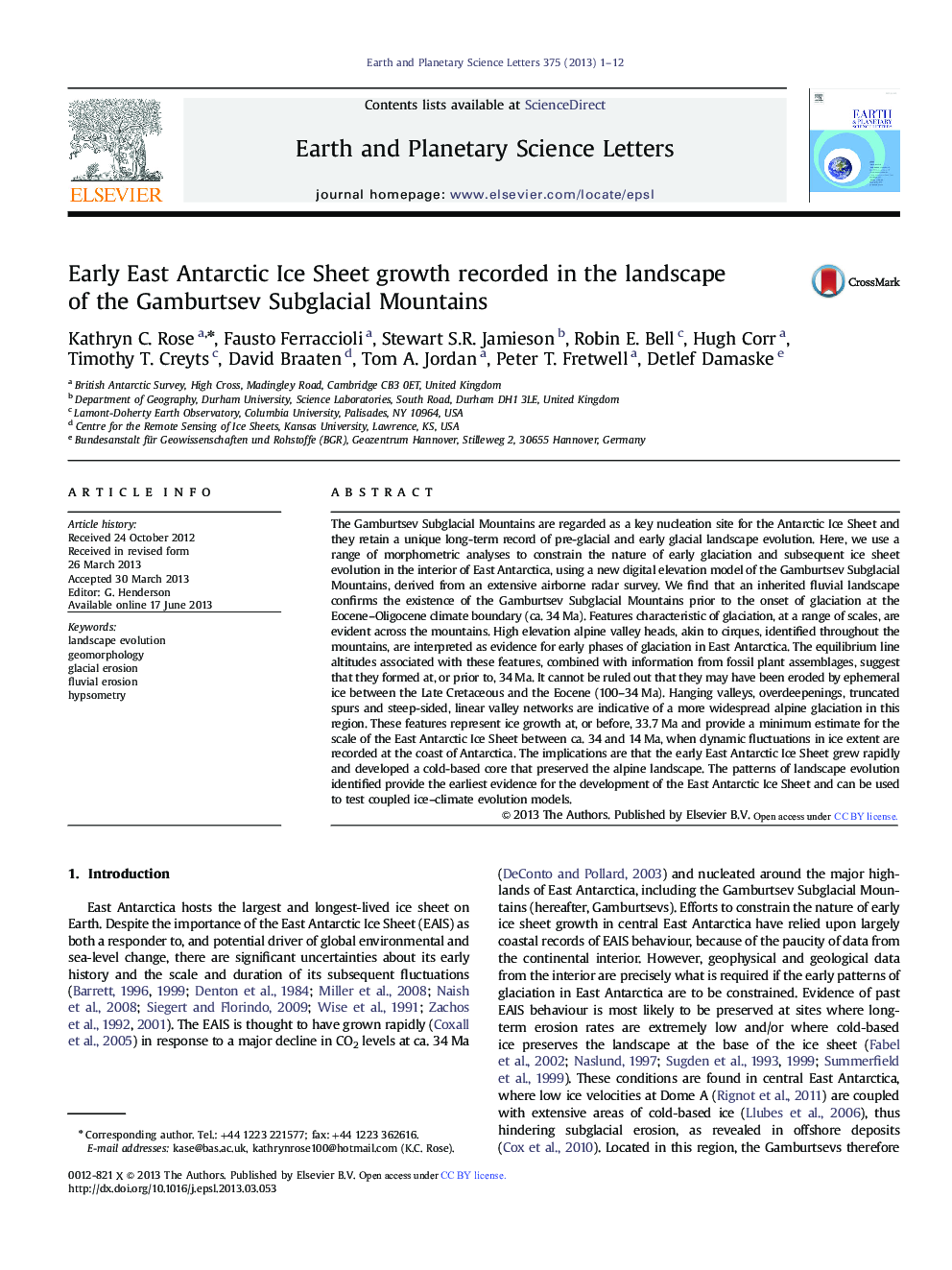| Article ID | Journal | Published Year | Pages | File Type |
|---|---|---|---|---|
| 6430181 | Earth and Planetary Science Letters | 2013 | 12 Pages |
â¢New geomorphological analysis of the Gamburtsev Subglacial Mountains, East Antarctica.â¢An ancient fluvial drainage system survives beneath the EAIS.â¢Glacial features from early ice masses are superimposed upon the landscape.â¢High elevation, alpine valley heads were eroded by glaciers at or before 34 Ma.â¢Glacial overdeepenings reflect erosion under ice sheet expansion at, or before, 33.7 Ma.
The Gamburtsev Subglacial Mountains are regarded as a key nucleation site for the Antarctic Ice Sheet and they retain a unique long-term record of pre-glacial and early glacial landscape evolution. Here, we use a range of morphometric analyses to constrain the nature of early glaciation and subsequent ice sheet evolution in the interior of East Antarctica, using a new digital elevation model of the Gamburtsev Subglacial Mountains, derived from an extensive airborne radar survey. We find that an inherited fluvial landscape confirms the existence of the Gamburtsev Subglacial Mountains prior to the onset of glaciation at the Eocene-Oligocene climate boundary (ca. 34Â Ma). Features characteristic of glaciation, at a range of scales, are evident across the mountains. High elevation alpine valley heads, akin to cirques, identified throughout the mountains, are interpreted as evidence for early phases of glaciation in East Antarctica. The equilibrium line altitudes associated with these features, combined with information from fossil plant assemblages, suggest that they formed at, or prior to, 34Â Ma. It cannot be ruled out that they may have been eroded by ephemeral ice between the Late Cretaceous and the Eocene (100-34Â Ma). Hanging valleys, overdeepenings, truncated spurs and steep-sided, linear valley networks are indicative of a more widespread alpine glaciation in this region. These features represent ice growth at, or before, 33.7Â Ma and provide a minimum estimate for the scale of the East Antarctic Ice Sheet between ca. 34 and 14Â Ma, when dynamic fluctuations in ice extent are recorded at the coast of Antarctica. The implications are that the early East Antarctic Ice Sheet grew rapidly and developed a cold-based core that preserved the alpine landscape. The patterns of landscape evolution identified provide the earliest evidence for the development of the East Antarctic Ice Sheet and can be used to test coupled ice-climate evolution models.
